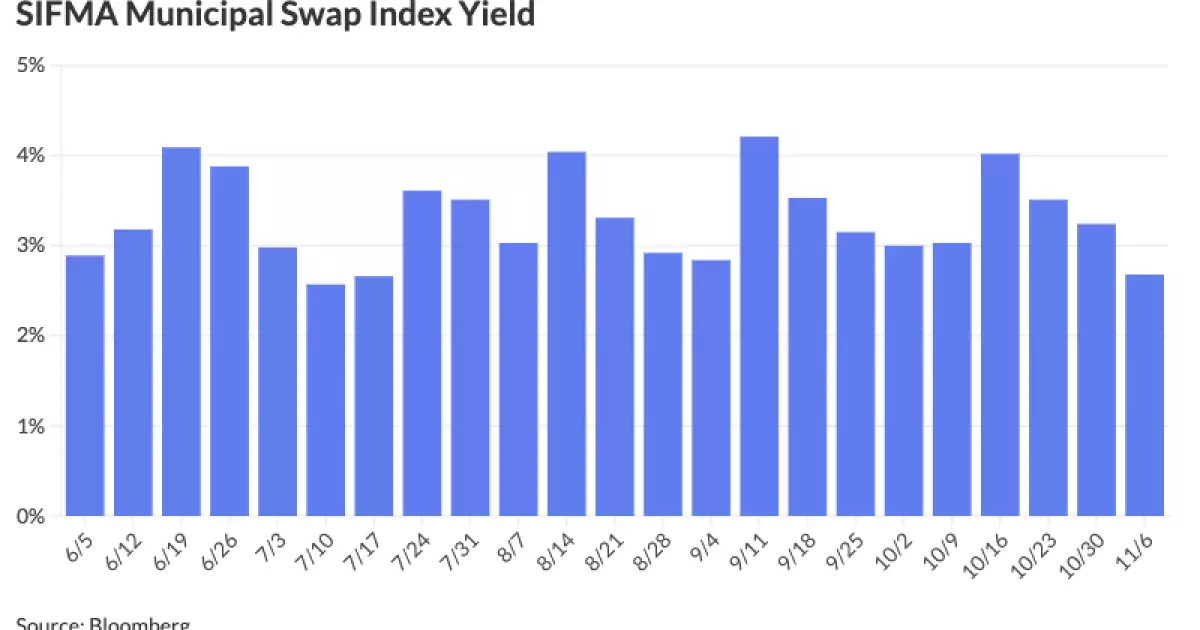The landscape of financial investment is constantly transforming, influenced by various factors that shape market behaviors. Currently, we observe a pronounced surge in both tax-exempt and taxable money market funds, driven by a combination of political uncertainties and the anticipation of Federal Reserve interest rate cuts. This article will delve into the intricacies of money market fund trends, exploring the implications for investors while considering macroeconomic viewpoints and forecasts.
In recent months, market participants have adopted a notably defensive financial posture, particularly amidst the prevailing uncertainty surrounding elections and economic policies. Observations indicate that many investors have allocated their resources into money market funds as a cushioning strategy while awaiting the Federal Reserve’s first rate cut after a nine-month span. Kim Olsan, a senior fixed income portfolio manager at NewSquare Capital, articulates this sentiment, underscoring that higher short-term interest rates in money markets and short-dated bonds have enticed cautious investors seeking to safeguard their capital.
As the economic landscape stabilizes, a gradual shift back to fixed income markets appears plausible. Investors have often preserved liquidity in money market funds, waiting for optimal entry points before committing to riskier assets. Recent reports from EPFR indicate a striking uptick in tax-exempt money market funds, reflecting a substantial $3.2 billion inflow in a mere week, pushing total assets toward a 2024 peak of $136.84 billion.
The dramatic fluctuations in the financial markets can be traced back to the COVID-19 pandemic, which precipitated an unprecedented influx of cash into money market funds, swelling their total assets drastically. Eric Golden, CEO of Canopy Capital Group, notes that before the pandemic, total assets in these funds were contained within the $2 trillion to $3 trillion range. Post-pandemic, however, the landscape morphed with funds surging due to the market’s reaction to the economic shock.
With the Federal Reserve initiating a series of interest rate hikes, money market funds have gained appeal, leading to asset totals exceeding $6.5 trillion. The virtue of these funds lies in their liquidity and lower risk exposure, making them a sensible haven amidst market volatility. Olsan highlights that current returns are competitive compared to long bonds, particularly for the one to two-year municipal index, offering investors a potentially fruitful investment alternative as rate adjustments continue.
Currently, the yield curve remains a focal point of analysis. An inversion, where short-term interest rates exceed those of long-term bonds, signals underlying economic concerns. Presently, there exists a modest inversion of about 50 basis points between short-term money market rates and 10-year yields. Observers like Olsan indicate this trend could deter investors from venturing further out of the curve, particularly as municipal fund balances show a healthy uptick.
Consultant Rick White adds that despite heightened interest in money market funds, volatility remains an enduring characteristic of the market. Fund inflows tend to spike at the month’s outset, leading to sensitive fluctuations in daily interest rates. As these daily rates rise, they produce a notably steep yield curve, emphasizing the ongoing volatility despite some stabilizing trends.
Looking ahead, the actions and decisions made by the Federal Reserve are poised to greatly influence the direction of fund flows. As the central bank contemplates rate cuts, Golden posits that the movement of capital out of money market funds could mirror these decisions, particularly if the economy continues to showcase resilience against inflation. He emphasizes that money doesn’t remain dormant and will inevitably migrate into diverse asset classes, including municipal bonds for those in higher tax brackets.
However, despite an anticipated influx into the bond space, tax-exempt money market funds still account for a minuscule fraction compared to taxable counterparts. As the election cycle concludes, uncertainties linger regarding whether these dynamics will spur significant changes in investment behaviors.
As fluctuating interest rates and electoral uncertainties shape the investment landscape, money market funds serve as a critical component in investors’ strategies. The economic conditions and trends require critical observation as decisions from the Federal Reserve will inevitably steer market movements. While these funds provide a buffer against volatility, the ultimate challenge lies in discerning the optimal timing for reallocation as the economic environment evolves. In this dynamic and often unpredictable financial arena, both caution and foresight remain essential for successful investing.

